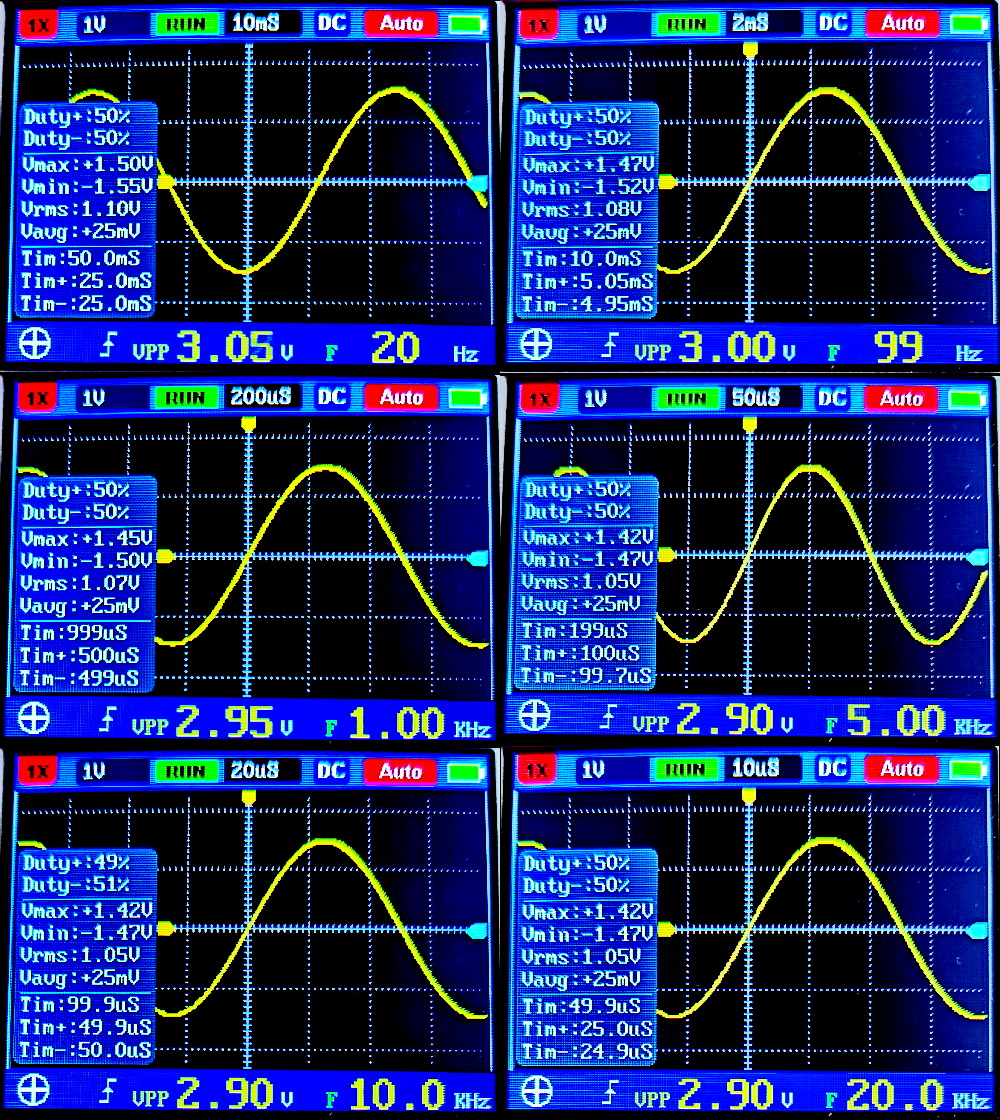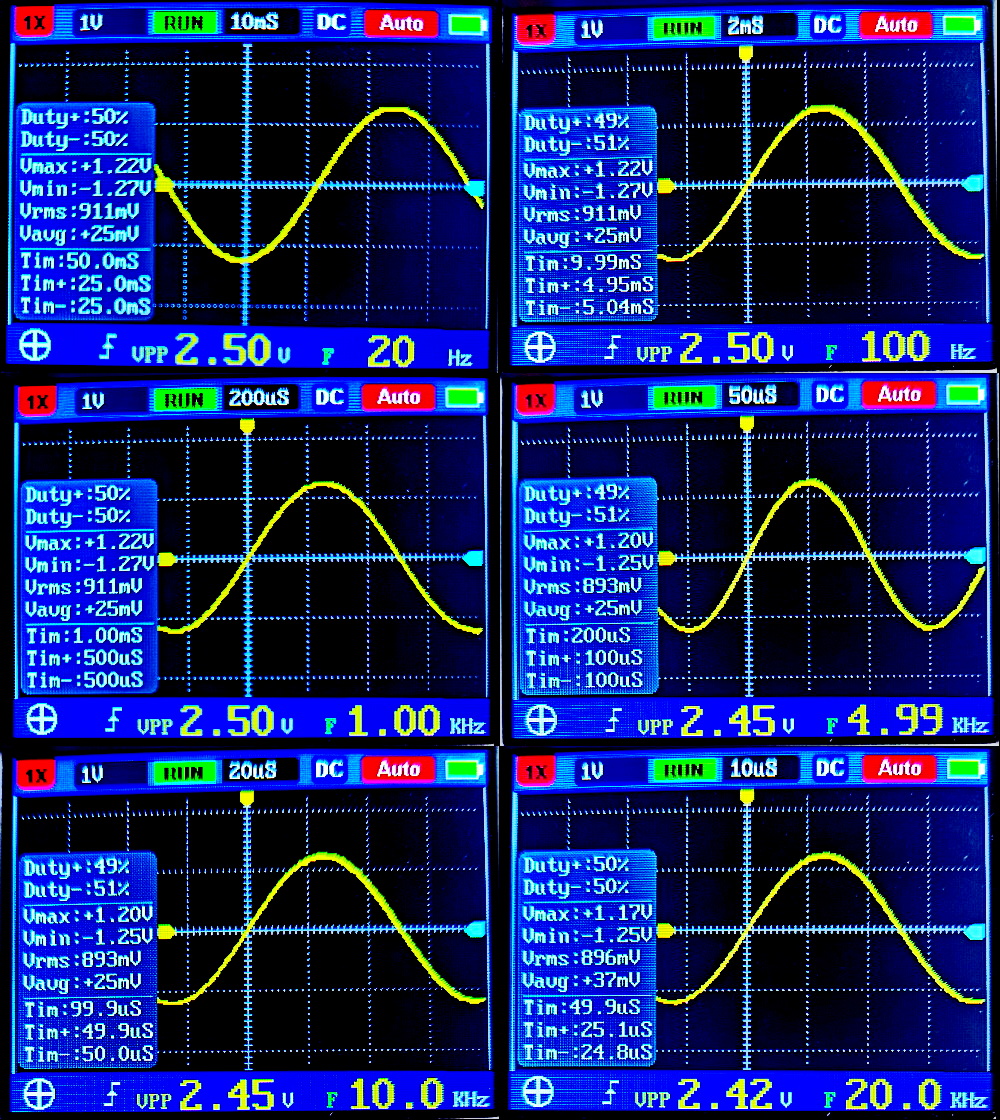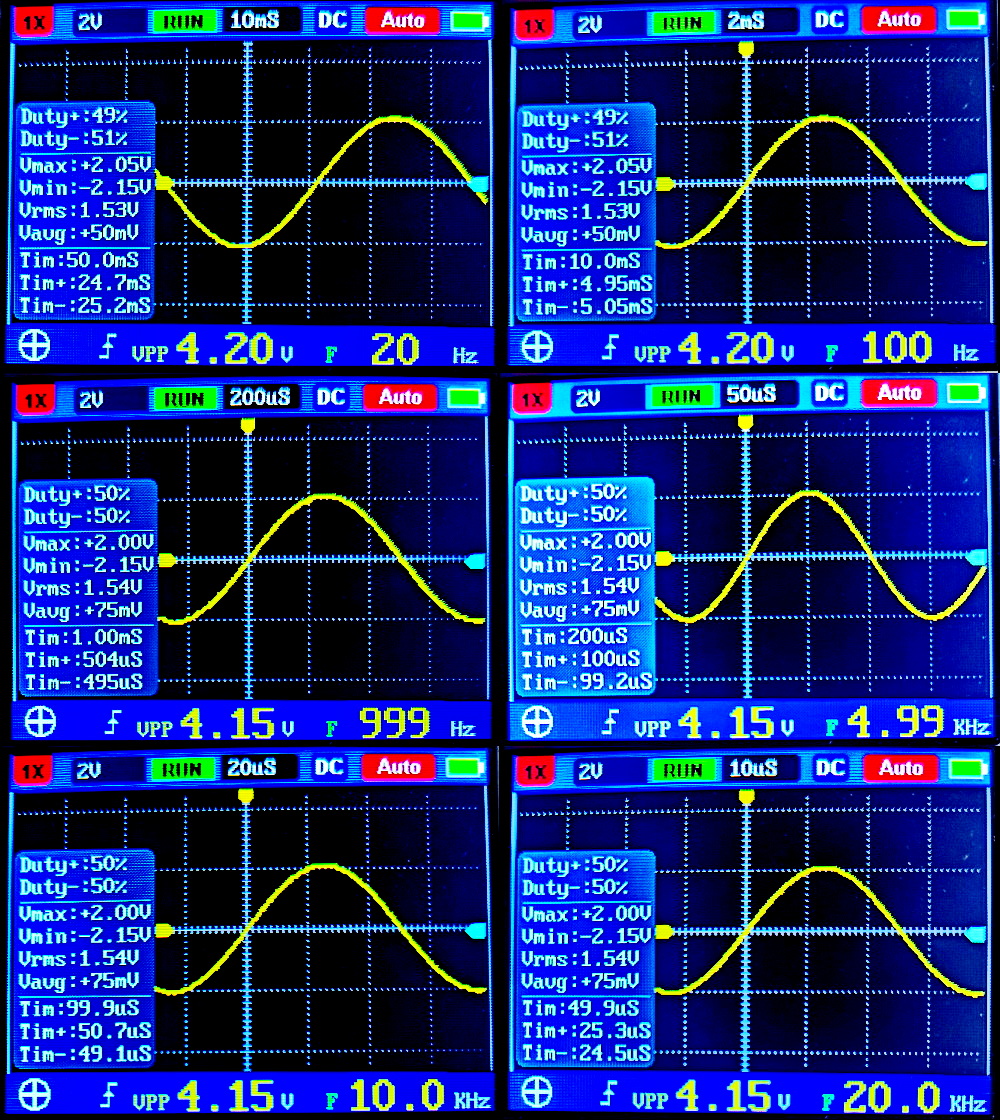
Tempotec Sonata MHD usb type c to 3.5mm dac
MQA Comes To The Family
Ratings
Pros
- MQA 8X with integrated volume control.
- Possibility to change the maximum voltage (1V, 2V) via firmwares.
- Technical specifications and remarkable measurements.
- Remarkable sound quality.
Cons
- It does not come with a case to store and protect it.
- The transparent plastic protectors are not suitable for this model, they are from the E series.
Introduction
Tempotec continues to squeeze its Sonata series and when it seems that there is nothing left to design, within this series, I forget that there is an acronym that I have not taken into account. It’s «MQA», something that Tidal users will know very well and that this new MHD supports up to 8X, always under the HiBy Music application. Of course, it also supports DSD and DXD. Although it has very similar cables to the E44, its connection is 3.5mm SE and its body is smaller and slimmer. On the main face is the MQA logo, under which there is a multicoloured LED, indicating the status or type of file being played. On this occasion, the volume buttons are 2 and on the side. Tempotec has used the ESS Sabre ES9281 integrated DAC/AMP, so well known and used in multiple dongles. Undoubtedly, the big advantage of this new product, apart from the MQA 8X decoding, is the integrated volume control, which sets it apart from some of its competitors. We will see the rest of the features below.
Specifications
- DAC/AMP: ESS Sabre ES9281.
- Maximum output voltage: 2V RMS.
- SNR: 128dB.
- THD + N: -112dB.
- Power: 70mW @ 32Ω.
- Support: MQA 8X.
- Support: TIDAL.
- Support: DSD128.
- Support: 32bit PCM/384kHz.
- Support: Earphone with microphone.
- Headphone output SE 3.5mm, gold plated.
- Aluminium alloy body.
- Weight: 18.5g.
- Length: 180mm
Packaging
The MHD comes in a box very similar to the E44 and E35. It is a white box with dimensions 127x100x35mm. On the front side you can see a couple of pictures of the edges of the MHD, showing each side of the device. On the back of the box is only the brand, the model, the website, the e-mail address, several QR and an EAN13. After removing the outer cardboard, a complete black box is visible again. It opens like a chest and inside you can see the MHD, the USB Type-C to classic USB adapter and a sticky Hi-Res logo, inside a thick foam moulding. Underneath, there’s little else. The complete contents are:
- Tempotec Sonata MHD.
- USB Type-C female to USB male adapter.
- Gold Hi-Res AUDIO logo sticker.
- 1 protector for the back.
- 1 front side protector.
- 1 wet wipe.
- 1 dry wipe.
Everything is the same as in the previous models. And I insist on «the same,» because the plastic protectors are not suitable for this new MHD, but for the previous models E35 and E44. A flaw in the accessories which, on the other hand, is not necessary on the rear face, as it is completely made of aluminium. It would make sense to have protection on the main side of the device, just to avoid scratches.
Finally, the set comes with a USB-C female to lightning male adapter as a free gift.
Construction and Design
Tempotec continues with the centre-pin design, silver-plated monocrystalline copper 8-strand cable for each end, USB Type-C connector on one side and 3.5mm SE connector on the other end. Each connector is gold-plated and identical to those on the E35. The USB male connector sleeve is the same colour as the body and is oval in shape. The headphone output connector sleeve starts out as a cylinder that turns into a rather bulky hexagon. It is also the same colour as the body. The centre pickup is smaller and narrower and still has ridges on its corners and a groove in the area where it meets the cables. It is still a black aluminium case, but, this time, the back is made entirely of aluminium. The buttons are two small ones, located on one side. The top face is glazed and has the MQA logo in its centre and the Tempotec branding at the bottom. Underneath the logo is a multicoloured LED that lights up depending on the status. The rear face has the brand logo at the top, close to the earphone output, and the model name at the bottom. The partial measurements are as follows:
- Global 182mm.
- USB connector 22.5mm.
- 3.5mm SE connector 24.5mm.
- Centre block 49.3mm.
- USB cable 45mm.
- Headphone output cable 45mm.
The weight of the pickup is light and the connectors are slightly heavier.
As you can see, there is a slight change in shape from the E-series, it is smaller and thinner, mostly covered in aluminium and with 2 side buttons for volume control. Everything else is very similar to its cousins.
Connectivity
The Sonata MHD has a USB Type-C connection, which limits it to Android, PC and DAPS compatible systems. Connected to a Windows PC it is Plug&Play, being compatible with version 10 without the need for additional drivers. It has no ASIO driver and will not be compatible with older versions of Windows.
Connected to an Android device, it is advisable to activate the «OTG» and «USB debugging mode» options. To enjoy MQA decoding it is convenient to use the HiBy Music APP.
Operativity
The E35 has 30 volume steps. But when connected to Windows, pressing each button changes the system volume by two points, giving 50 volume steps.
Apart from the advice to use the HiBy Music APP, the operation is not too difficult, apart from the fact that it seems to remember the volume position.
The Sonata MHD is able to operate in two modes, depending on the earphone connected: if it has a microphone, it automatically sets itself to call mode. If it doesn’t, it auto-configures itself to HiFi mode.
The colour of the light indicates the status of the MHD, as shown below:
- Red: Connected, but paused.
- Blue: Playing PCM 32-48kHz.
- Green: Playing PCM 88.2-192kHz/DSD64.
- Clear Green: Playing PCM 352.8-384kHz/DSD128.
- Purple: Playing MQA.
Finally, it is worth noting that the MHD has a Fade-In effect, around 2 seconds, when it starts playing. There may be people who like this effect, personally, I hate it.
Measures
Tempotec certainly doesn’t disappoint. If it says it delivers 70mW at 32 Ω, it does. And my first feeling was astonishment when I saw that the maximum no-load voltage barely exceeded 1 V. But how? I thought. If 2V is specified, how come it only gives 1V? My first thought was that it might have some kind of high gain mode, depending on the load connected. But it doesn’t. The second thing I thought of was firmware that would provide that high gain, and so it does. I contacted Tempotec and told them about my measurements. They quickly replied and told me what I was thinking. There are two firmwares, one that provides a maximum output of 1V and one that gives 2V. The update is very simple and quick. The reason, according to the brand itself, is that with 1V they are able to offer a more precise volume control, as the jumps are not so big. Something that, on the other hand, I have come to comment on their E-series cousins.
As can be seen from the measurements at 100 Ω, the output impedance is very low, less than 1, as the voltage is the same as at no load.
Below you can see the measurements with the two firmwares.
No load firmware 1V
It can be seen that the output voltage is clean and slightly above 1V RMS.
15 Ω firmware 1V
The maximum voltage obtained with this load, without visible distortion, is close to 0.6V, which means a power of 24mW.
33 Ω firmware 1V
The maximum voltage obtained with this load, without visible distortion, is just over 0.8V, which is close to 20mW power.
100 Ω firmware 1V
With this load the voltage is the maximum, as you can see, just over 1V. The power is 11mW
No load firmware 2V
It can be seen that the output voltage is clean and slightly above 2V RMS.
15 Ω firmware 2V
The maximum voltage obtained with this load, without visible distortion, is 0.911V, giving a power of 55mW.
33 Ω firmware 2V
The maximum voltage obtained with this load, without visible distortion, is more than 1.5V, which means a power of 70mW. This is the specified value.
100 Ω firmware 2V
To my surprise, this load does not reach 2V cleanly. 1.9V provides 36mW.
Frequency Response
The frequency response is ultra-linear from 20Hz to 40kHz, with no crosstalk.
Sound
The sound of the Tempotec Sonata MHD is based on a completely flat and homogeneous frequency response, so the sound is balanced, but with a little hint of warmth. The result is a very pleasant sound, where everything is coherent in terms of musical quality, profile, scene, level of detail and price.
As I mentioned, there are two firmwares that allow the MHD to have one gain or the other. As standard, it came with the firmware limited to 1V. With this one, I find that for sensitive IEMS and/or low impedance, it will be very suitable, hardly anything more powerful will be necessary. But with the high gain firmware (2V), I find some more subjective boost, which allows to expand the sound on those IEMS that are a bit hungrier. It is true that the volume control will not be as precise for 2V as it is for 1V, but that is the price to pay for those who need more output voltage.
Leaving aside power considerations and returning to the pure description of the MHD’s sound, like the good SABRE in it, I could describe its sound as technical, yet very coherent and mature. It is tonally effective, reliable, clear, clean and with a remarkable level of transparency. Only that small point of warmth could alter the above. This warmth appears in the transition between the lower and mid-range. At the point where the bass tends to expand, after its subsequent decay, there is a dissipation that transfers a slight haze to the sound. This is something I find unusual in analytical DACs like the ESS ones, but I perceive it as such. This particular (and personal) perception gives the sound a nuance, which detracts a bit from its transparency, separation and three-dimensionality. Although it is true that this is my own perception, it is the basis that has helped me to differentiate its sound from other devices with the same chip.
The low end is thus complete and flat, with good attack (despite the above comments), precision and resolving power. Only that hint of haze detracts from its detail and descriptive level, although, on the other hand, it adds a little more cohesion and prevents the bass from being too dry, and even manages to subtly liquefy it.
The balance and tonal respect persists in the mid-range, which is represented with clarity, a good sense of openness and transparency, despite the slight warmth. The level of resolution is remarkable and the detail very adequate, without one thinking that this is an eminently analytical device. In fact, the musical feel has a tendency towards naturalness, but Sabre can always provide a point of higher resolution and analysis. This is not a negative issue, but rather, in my opinion, an additional attraction. This character brings light and definition, counteracting the slight warmth of the lower zone. Thus, the middle zone is resolved with a good dose of transparency, an adequate amount of openness, a clean timbre, with a neutral tendency, and a balanced, pure and pleasant pattern.
In the upper range, there is no change in predisposition and everything said for the middle range could be repeated in this range. Although it is worth noting that the sound does not become more analytical in this zone, nor does it excite beyond the general neutrality of the device. The idea of purity, cleanliness, without going beyond the margin of naturalness and balance, persists. Sharpness continues to rise and the level of resolution manages to outline the top notes with good character and personality. Needless to say, there’s no room for any jolts or out-of-tune peaks. And although the sound is in a price/performance range where it belongs, it is at the upper end of that range. This is not to say that we are asking for a lot, but we will not be disappointed with the highs presented by the MHD, nor with its other technical characteristics.
This new Sonata is able to provide a remarkable sense of openness, good depth and more than acceptable headroom. The level of three-dimensionality is more than average. The cleanness of the sound and its level of transparency bring to this section advantages that help it express a sense of separation, clarity and darkness between notes that are more than adequate, raising the bar above that average. Although, in any case, I wouldn’t put this device in the same range as its E44 sibling in these technical aspects. It is a more mundane grade, eminently good, remarkable, but not exceptional.
Comparisons
Hidizs S3 Pro
Both devices are very similar internally, because they have the same DAC. Externally, however, they are very different. The S3 Pro is smaller, round, with a single cable and the 3.5mm jack integrated into the aluminium body. The MHD has two cables, is a rectangular, elongated and flat tablet, with two side buttons for volume control. Basically, these buttons can be the big difference between one and the other, apart from the price. Otherwise, in sound, they are extremely similar. After many test songs, I wouldn’t put my hand on the fire as to which is which. Although, I think the MHD is slightly warmer than the S3 Pro. And while both share that spark of warmth, I find a hint of greater transparency in the Hidizs. This is not that it’s eminently better or worse, but it’s what I said in the sound section: the low end haze is slightly higher on the MHD. On the other hand, at present, the price/performance ratio is better on the Hidizs, not to mention the fact that it has no volume control. Those who want an integrated volume control via hardware will have no problem choosing the MHD. Those who don’t need it, the S3 Pro would be better value for money. However, if no one is going to use the MQA feature, I would go for its cousin E35 or, above all, the E44.
Another advantage of the MHD over the S3 Pro is the ability to use firmware to provide a maximum output of 1V or 2V. The Hidizs is more powerful at 15Ω (66mW versus 55mW), but less so at 33Ω (59mW versus 70mW).
Finally, the S3 Pro has 3 types of firmware that allow the sound profile to be changed, whereas this is not possible with the MHD.
Conclusion
The Tempotec Sonata MHD is the last component of the family, the one that was missing, the one that uses Sabre and deploys MQA 8X. To what extent this feature is relevant will be up to Tidal users to decide. For me, a non-user of streaming music, it is of little importance. But I’m sure for many others, it can make the difference between buying one dongle or another. And that is where Tempotec is not going to lose. The advantages over the other competitors are still clear, the sound is up to par and hardware volume control is not available on many of them. Hence, the combination of these two features may well tip the balance in favour of the MHD. At the other extreme, its price is quite similar to that of its E44 cousin and higher than that of the E35. In this case, the end use for which this dongle is intended will be the key to the purchase. If you use Tidal, there will be no doubt: the MHD and its volume control will be the favourite.
On the other hand, Tempotec twists and squeezes the device a little further and offers two firmwares for the MHD. As standard, the maximum voltage is 1V, aimed at use with sensitive IEMS, with the intention of improving the sensitivity of the volume control. But, as specified, the MHD can provide a maximum output of 2V, but this will require the use of firmware that releases the maximum power. Going back to 1V output will always be possible with the appropriate firmware. It is not as clean as an automatic gain detection, depending on the connected load, but it will certainly eliminate some inconsistencies that such a detection may cause. In this way, I still think that Tempotec’s ability, in this kind of scenario, is on a par with few other brands.
Earphones and Sources Used During Analysis
- Tempotec V1-A
- Xiaomi Redmi Note 8 Pro
- BGVP ArtMagic VG4
- ISN H40
- NS Audio NS5 MKII Extra Bass
- LZ A4 Pro
- Dunu Falcon Pro
- NiceHCK TopGuy
- NiceHCK Lofty
- Yanyin Aladdin
- NF Audio NA2+
- Ikko OH10
- NiceHCK EBX21
- Smabat M0
- Hessian Ansata Pro


































Add a comment